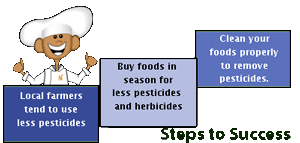
It’s now well established that consuming organic food is superior to eating conventional produce, meat, and dairy. However, it’s important to understand that it is not always a black and white issue when it comes to choosing your organic items. This means that, due to the nature of the National Organic Program in the United States, there are inevitable variations among organic foods themselves. This understanding is valuable when deciding what criteria are important for you and your family so that you can shop wisely, as organic products typically appear side by side on supermarket shelves.
For example, these are the criteria which qualify dairy to be certified organic by the USDA, taken from the Agricultural Marketing Service website:
 Since farms are certified using different certifying agents, it’s easy to see how there is room for variation. Take for example the matter of grazing days and access to the outdoors. A carton of USDA certified organic milk from a cow allowed 120 days of grazing, with 3 dozen other cows, on only 2 acres and primarily grain-fed can be sold alongside a carton from a cow which is allowed 200 days on 20 acres with less cows, and given real freedom to graze. This difference can manifest in the quality of the milk itself, given that a cow naturally eats grass and hay, not grains.
Since farms are certified using different certifying agents, it’s easy to see how there is room for variation. Take for example the matter of grazing days and access to the outdoors. A carton of USDA certified organic milk from a cow allowed 120 days of grazing, with 3 dozen other cows, on only 2 acres and primarily grain-fed can be sold alongside a carton from a cow which is allowed 200 days on 20 acres with less cows, and given real freedom to graze. This difference can manifest in the quality of the milk itself, given that a cow naturally eats grass and hay, not grains.
At the end of the day, the nutritional value of both types of milk are the same. The only guarantee in organic milk vs conventional milk is that it will be free of antibiotics, hormones, and will come from healthy cows. It is possible to purchase dairy from exclusively grass-fed cows, as they will be labeled as such.
A great resource to help you locate the highest quality organic dairy you can purchase in your area can be found on the Cornucopia Institute’s website. They are a non-profit public interest group dedicated to transparency in our food supply. On their site, they have several “scorecards” for organic food, including dairy farms. These farms are rated on the living conditions of the animals, along with characteristics of the farms themselves. In general, the smaller a farm, the more likely it is to produce better quality organic dairy. Take note of those distributing high-quality organic dairy to your area, and take that list with you next time you visit the grocery store.

0 Comments